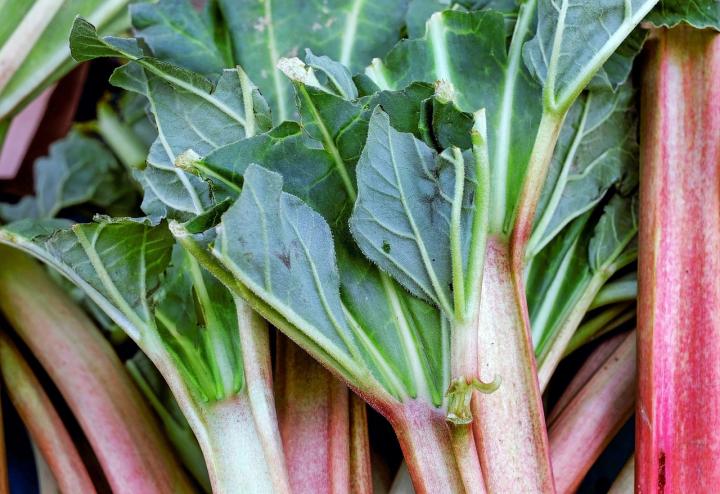
Rhubarb is a perennial vegetable, though it is generally used as a fruit in desserts and jams. You only eat the stalks, which have a rich tart flavor. The leaves of this plant are poisonous, so be sure that they are not ingested. Rhubarb is easy to grow, but needs cool weather to thrive.
Planting
- Before planting, eliminate all perennial weeds.
- Choose a site that is well-drained, fertile, and preferably in full sunlight. It does best where the average temperature falls below 40ºF in the winter and below 75ºF in the summer.
- Plant one-year rhubarb crowns in early spring as soon as the ground is workable when the roots are still dormant and before growth begins or plants are just beginning to leaf out.
- Rhubarb can also be planted in the fall after dormancy has set in.
- Dig large bushel basket-size holes. Space rhubarb plants about 4 feet apart and plant the roots 1 to 2 inches below the surface of the soil.
- Be sure to mix compost, rotted manure, or anything high in organic matter in the soil. Rhubarb plants are heavy feeders and need this organic matter. Don’t add a chemical fertilizer when planting rhubarb or during the first year of growth. Direct contact with nitrates can kill your rhubarb plants.
Care
- Mulch generously with a heavy layer of straw and cow manure to provide nutrients for the plant, retain moisture, and discourage weeds.
- Water your plant well. It needs sufficient moisture during the summer.
- Remove seed stalks as soon as they appear.
- After the first spring, apply a light sprinkling of a high-nitrogen fertilizer (25-3-3 or 10-6-4) when the ground is thawing or has just thawed, so that the fertilizer will go into the ground and not harm the roots.
- Insects and diseases won’t bother rhubarb plants as long as you keep the plants weed-free.
- Dig and split rhubarb roots every 3 to 4 years. Divide when plants are dormant in early spring (or fall).
Pests/Diseases
Harvest/Storage
- Do not harvest any stalks during the first growing season so that your plants can become established.
- Harvest the stalks when they are 12 to 18 inches long. Usually after 3 years, the harvest period runs 8 to 10 weeks long. If the stalks become thin, stop harvesting; this means the plant’s food reserves are low.
- Grab the base of the stalk and pull it away from the plant with a gentle twist. If this doesn’t work, you can cut the stalk at the base. Be sure the discard of the leaves!
- Always leave at least 2 stalks per plant to ensure continued production. You may have a bountiful harvest for up to 20 years without having to replace your rhubarb plants.
- After harvest time, the stems may die back. Just remove all plant debris. Once your ground freezes, it’s best to cover rhubarb with 2 to 4 inches of mulch, preferably well-rotted compost; by adding nitrogen to the soil, you’re preparing the rhubarb plants for a good spring season.
Recommended Varieties
- Red rhubarb varieties, which are more tender. Some include ‘Valentine’, ‘Crimson Cherry’, and ‘Canada Red’.
Wit & Wisdom
Rhubarb has many other uses, from medicinal to cosmetic. See how to naturally lighten your hair with rhubarb.
Recipes
- Strawberry-Rhubarb Pie
- Rhubarb Upside-Down Cake
- Blueberry-Rhubarb Jam
Cooking Notes
Check out our list of best rhubarb recipes to put your fresh rhubarb to good use! Plus, learn how to make a rhubarb tonic.






